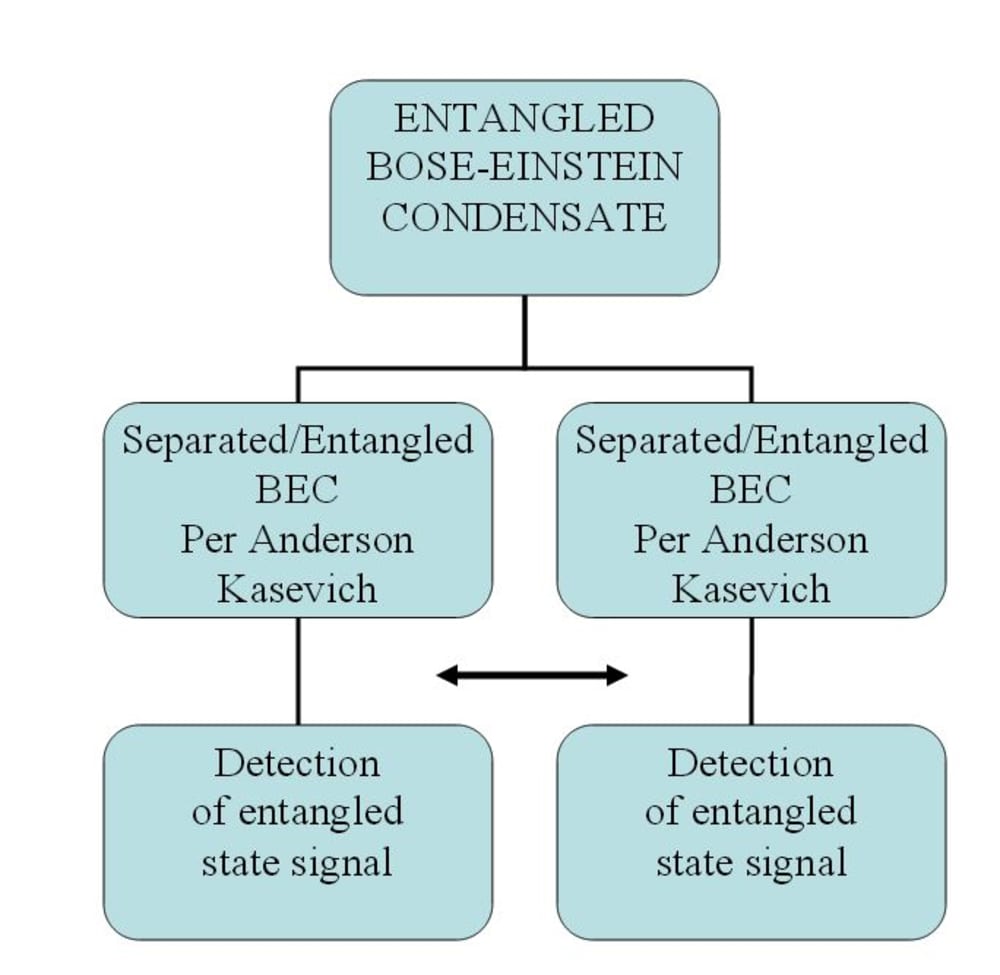Considering the continuing advancements in both quantum entanglement and Bose Einstein Condensates and how these two areas of research may complement each other this entry will describe how individual research programs might be combined to create a quantum entanglement communications system.
Begin with
Science 11 November 2011:
Vol. 334 no. 6057 pp. 773-776
DOI: 10.1126/science.1208798
Twin Matter Waves for Interferometry Beyond the Classical Limit B. Leuck,* et al.
http://www.sciencemag.org/content/334/6057/773
This suggests that quantum entanglement can be increased to 10 the 4th atoms. Then, from the 11/27/98 Science, Yale researchers Anderson and Kasevich show how to divide a BEC using an optical lattice. Once these BEC is divided, various methods can be used to detect the entanglement or and forced changes in the quantum aspect being observed across the divided BEC. Note this is not to observe quantum level interaction, but more macro level responses such as spin (George, et al, Oc, 22, 2012) or
Khajetoorians, et al,
http://www.sciencemag.org/content/339/6115/55
Other methods may use Josephson Junction arrays (Casteliotti, et al, Science Vol 293, 8/3/2001.
The point is that we can observe a rapid convergence of research programs that can result in practical use on entanglement at a distance to send a controlled signal between two discrete assemblages of BEC.
Like this entry?
-
About the Entrant
- Name:Michael Furr
- Type of entry:individual
- Patent status:none

